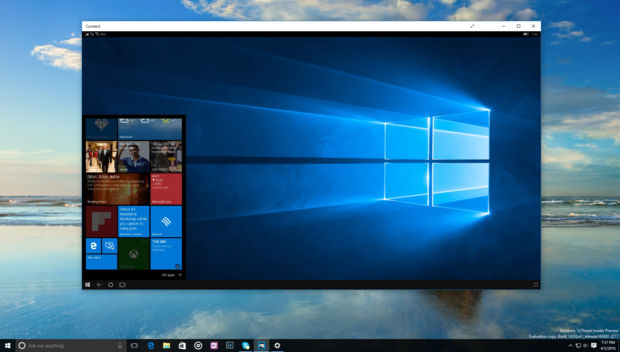Enterprises that have adopted Windows 10 will face the demise of three versions of the operating system in the next 18 months, and so for the first time will be forced to keep up with the faster release and retirement cadence Microsoft has embraced.
In March, Microsoft will end support for Windows 10’s debut version, the build launched in July 2015. While the version — designated 1507 in the company’s year and month nomenclature — will continue to work, security updates will cease, probably after Microsoft delivers the month’s Patch Tuesday fixes on 14 March, 2017.
After that date, devices assigned to what Microsoft calls “Current Branch for Business” (CBB) — the release track that most commercial PCs have been assigned to — must be updated to a build newer than 1507 to continue receiving vulnerability fixes.
Reduced cadence
While Microsoft’s concept for Windows 10 was predicated on a cadence much more rapid than before — new versions with new features were to arrive up to three times a year — the need for business customers to adhere to the tempo was delayed because none of the builds thus far have been retired.
Corporate IT administrators have been able to deploy any of the first three versions of Windows 10, and more importantly, leave them in place. Upgrades, a crucial part of the “Windows as a service,” have not been required.
That will change because of the support policy Microsoft has crafted for Windows 10. The company has pledged to support at least two CBB builds concurrently, which means that at the release of N+2, where N equalled the oldest version, the company starts a 60-day-or-so countdown. At the end of the 60 days, N drops off the support list.
When the summer’s Anniversary Update — labelled 1607 — shifted to the CBB last week, N equalled 1507; N+1 represented 1511, the November 2015 upgrade; and N+2 equalled 1607. That meant 1507 support is to be shuttered two months from the January availability of 1607 in the CBB, or in other words, in March.
Finely tuned
Windows 10’s schedule was originally explained by Microsoft as a finely tuned machine that would issue a new version every four months, with each build supported for 12 months before it was retired. Those using the to-be-retired version would be required to upgrade if they were to continue receiving security patches.
Since then, the company has both struggled to meet that tempo and adjusted to a more realistic cadence. Along the way, Microsoft also changed some of the ground rules. It backed away from the thrice-yearly schedule, quickly pivoting to a slate of two upgrades annually (and only one in 2016). And rather than support a version for only 12 months, it has promised to patch a version of Windows 10 for at least 18 months.
Microsoft has also clarified when versions transition from the consumer-grade release on the “Current Branch” (CB) to the corporate-level CBB, and defined the “grace period” it gives businesses before stopping patches. The gap between CB and CBB was supposed to be about four months, but has been five. Add two months for the 60-day upgrade-now grace, and the gap between the release of and N+2 and the expiration of N should be six to seven months.
Estimated timetable
Using that information and an estimate of the timetable for Windows 10’s two upgrades of 2017 — something Microsoft has pledged even though it has not disclosed dates — it is possible to assemble a tentative schedule for enterprises over the next year and a half.
Windows 10 1511, which launched in November 2015 and reached the CBB in April 2016, will reach its end of support (EoS) in September 2017 because the next future version — 2017’s first — will probably debut on the CB in March. (Six months from then — four to shift to the CBB, two for the grace period — would be September.)
Likewise, Windows 10 1607, the version Microsoft shipped in early August 2016 and promoted to the CBB last month, will be retired around April 2018 if, 2017’s second upgrade appears in October of next year. (Six months from October 2017 would be April 2018.)
The three versions set to retire in the next 18 months — 1507 in March, 1511 in September and 1607 in April 2018 — will test enterprises’ abilities to deal with the new Windows servicing model. Companies better be ready, said Wes Miller, an analyst at Directions on Microsoft.
“They have to learn to adapt to these new cycles of both the more agile Windows and Office,” Miller said, adding Office and its three-times-a-year upgrades to the discussion. “The reality is that [versions of Windows] will go out of support, so enterprises must adopt a lifecycle that allows them to deploy the versions that they want, but be ready to upgrade.”
Upgrade tempo
Businesses have never had to deal with a Windows upgrade tempo this fast before, nor, said Miller, had to migrate from one major edition of Windows to another while at the same time managing upgrades to the newer as the transition takes place over a year or more.
Miller also added his voice to those of other analysts who have pegged Windows 10 1607 as the candidate enterprises will most likely deploy as they start their moves to the new operating system. “This is the one a lot of businesses will deploy first,” Miller said.
Not only will 1607 be supported throughout all next year and the first months of 2018 — prime time for migrations to begin if companies are to beat the Windows 7 EoS deadline of January 2020 — but its successor, what Microsoft has dubbed the “Creators Update,” appears solidly aimed at consumers, not commercial customers.
IDG News Service







Subscribers 0
Fans 0
Followers 0
Followers